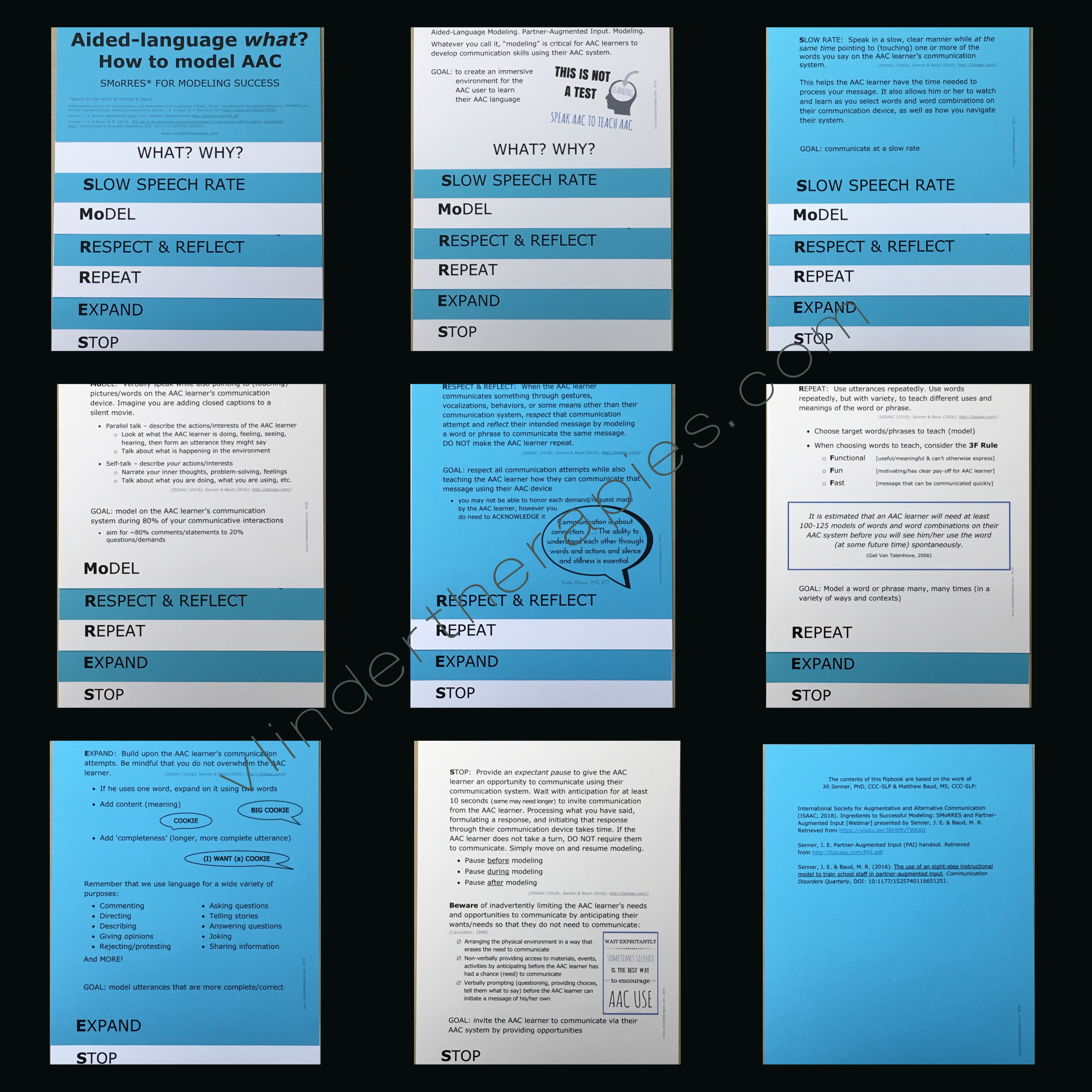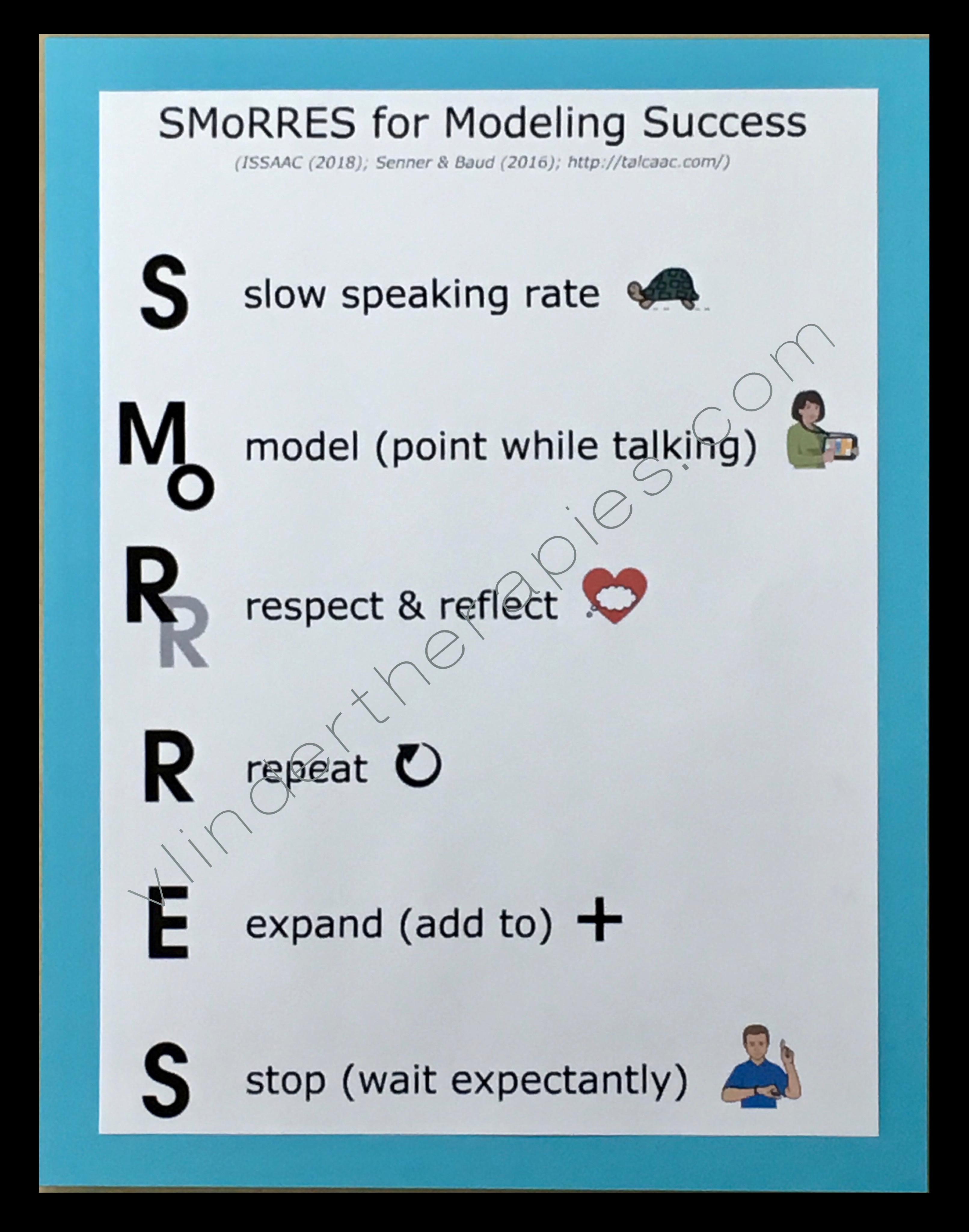Aided-language what? How to model AAC

I provide consultation services to teams supporting individuals (children through adults) with complex communication needs. Typically, I am brought in to conduct a communication evaluation, make recommendations, and then implement and train the teams on the recommended supports and/or AAC (augmentative-alternative communication) systems. Often, my services are contracted for a limited time (a certain number of hours over a set number of months) and then I will never be involved with the case again (due to funding issues).
There are many difficulties - limited time with the teams and staff turn-over within the teams near the top of the list. From the moment I was approached to provide more consultation services for adults with developmental disabilities and complex communication needs, I have been concerned with maximizing my effectiveness. These individuals deserve access to functional communication and the potential for improving their quality of life is huge! But how can I set them up for continued success after I am no longer there to support them and their teams? One approach I have come up with is related to the training materials I use. I have been working to create materials that I can leave behind with these teams to help them remember all of the information I tried to share/teach them, as well as to act as a resource that they can pull out to train new staff/team members as they come on board after I am long gone. I am a big believer that the more attractive and user-friendly the materials look, and the more quick and to the point the information is, the more likely they are to be used.
Once an appropriate communication system has been matched to the individual with complex communication needs, two of the most important components to the success of AAC are: sufficient training/support for communication partners, and use of "modeling" with AAC-learners. Supporting and interacting with an AAC-learner does not come naturally to most. Communication partners need to be taught directly and specifically the what, when, why, and how of supporting someone who is learning to communicate through an AAC system. A meta-analysis from Kent-Walsh, et al (2015) found that providing instruction to communication partners resulted in improvements in communication by AAC communicators. They note that one of the most common skills taught to communication partners was "modeling" (also called partner-augmented input, aided-language modeling, etc.).
Last fall, I created a "tips" flipbook resource with some key information about implementing AAC. I use it as a jumping off point for my trainings, and leave a laminated hard copy at the client's home. I also have a downloadable/printable .pdf version on my blog so that teams can make more copies of the flipbook as needed (such as for school team members or work placements, or when it gets lost/destroyed). It is still a "new" resource, but so far the response has been positive!
I have been feeling, however, that I need to provide more systematic training on "modeling". To help train teams about partner-augmented input (modeling), I recently had the idea to use Senner & Baud's SMoRRES mnemonic as the basis for another flipbook. This mnemonic provides a breakdown of various factors involved (a "how-to") to model AAC effectively. It provides communication partners an idea of what effective modeling looks like. I am just beginning to share it with the teams I am currently consulting with, and am excited to see how it is received.

Note: I print out the pages (using color paper for alternating pages), cut to size and laminate, trim, stack in order and coil bind along the top edge; for the back cover, I have added a quick reference SMoRRES poster (which can also be a stand-alone visual reminder).
 (Includes PCS symbols from Boardmaker from Mayer-Johnson/TobiiDynavox*)
(Includes PCS symbols from Boardmaker from Mayer-Johnson/TobiiDynavox*)
A huge thank you to Jill E. Senner, PhD, CCC-SLP and Matthew R. Baud, MS, CCC-SLP for being open to my adapting their SMoRRES mnemonic into a flipbook and for giving approval for me to share the final draft! For more information on the SMoRRES mnemonic, see the references below, or visit: http://www.talcaac.com/ (click on Links & Downloads).
My hope is that these two flipbook training and reference materials will help address the need for communication partner training and support, as well as provide specific information on how the teams I work with can support their AAC-learner...even after they no longer have access to me.
You might also be interested in:
AAC Tips Flipbook
References:
International Society for Augmentative and Alternative Communication (ISAAC, 2018). Ingredients to Successful Modeling: SMoRRES and Partner-Augmented Input [Webinar] presented by Senner, J. E. & Baud, M. R. Retrieved from https://youtu.be/3RtWBvTWEXU
A summary of the above article can be accessed via The Informed SLP: Throwback (2015): What and how to teach AAC communication partners
Senner, J. E. Partner-Augmented Input (PAI) handout. Retrieved from http://talcaac.com/PAI.pdf
Senner, J. E. & Baud, M. R. (2016). The use of an eight-step instructional model to train school staff in partner-augmented input. Communication Disorders Quarterly, DOI: 10:1177/1525740116651251.
* The Picture Communication Symbols ©1981–2018 by Mayer-Johnson LLC. All Rights Reserved Worldwide. Used with permission.
 Saturday, April 14, 2018 at 9:06PM
Saturday, April 14, 2018 at 9:06PM  Post a Comment →
Post a Comment →
Reader Comments